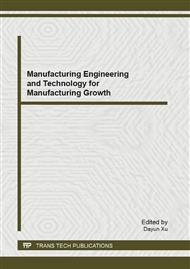p.386
p.390
p.396
p.403
p.410
p.420
p.427
p.433
p.440
Control of a Permanent Magnet Synchronous Machine Using Neural Network Backstepping Approach
Abstract:
This paper aims to control a nonlinear uncertain system using the neural network backstepping technique by way of the following steps: the first one consists in localizing and modelling the unknown nonlinearities depending upon non-measurable states which in their turn subjected to uncertainties as well as external constraints, the second step is to design a suitable control law to overcome either the uncertainties and the external constraints. In short, this work comes down to solve a non linear and uncertain problem with some external constraints, so the suitable solution to this problem is the use of an adaptive backstepping control capable of eliminating the system uncertainty, attenuate remarkably the effect of the external constraints and reduce the uncertainty approximation errors. All these things are performed using the neural-network technique associated with the backstepping one, i.e., the use of the neural network backstepping approach to control the permanent magnet synchronous motor.
Info:
Periodical:
Pages:
410-419
Citation:
Online since:
December 2012
Authors:
Keywords:
Price:
Сopyright:
© 2013 Trans Tech Publications Ltd. All Rights Reserved
Share:
Citation:


